India train crash: Prime Minister Narendra Modi visits accident site
A railways minister says the cause of the crash of three trains that killed 288 and hospitalised 900 has been identified as calls grow for his resignation. Warning: Graphic
World
Don't miss out on the headlines from World. Followed categories will be added to My News.
The cause of India’s deadliest train disaster in decades was linked to the signal system, the railway minister said on Sunday, local time, as families scoured hospitals and morgues for missing relatives and deaths were expected to top 288.
Mounds of debris were piled high at the site of Friday night’s crash near Balasore, in the eastern state of Odisha, as workers repairing the tracks cleared the smashed carriages and blood-stained wreckage where hundreds were also injured.
Hospitals have been overwhelmed by the number of casualties.
“We have identified the cause of the accident and the people responsible for it,” India’s Railway Minister Ashwini Vaishnaw told news agency ANI.
He said it was “not appropriate” to give details before a final investigation report.
There was confusion about the exact sequence of events but reports cited railway officials saying a signalling error had sent the Coromandal Express running south from Kolkata to Chennai onto a side track.
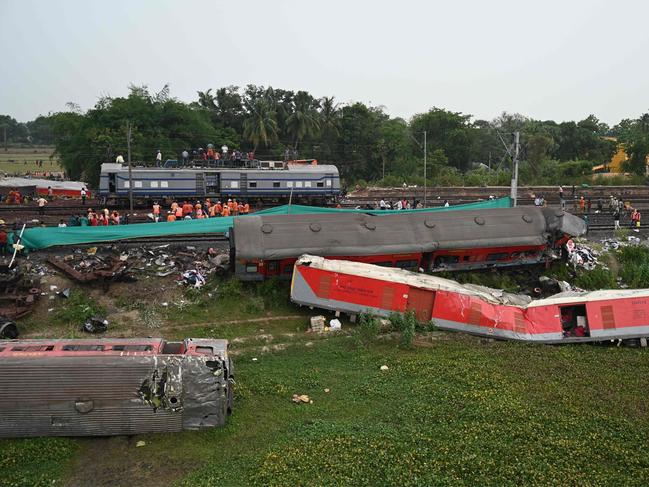
It slammed into a freight train and the wreckage derailed an express running north from India’s tech hub Bengaluru to Kolkata that was also passing the site.
Sudhanshu Sarangi, director general of Odisha Fire Services, said the death toll stood at 288 but was expected to rise further, potentially approaching 380.
Odisha’s chief secretary Pradeep Jena confirmed that about 900 injured people had been hospitalised.
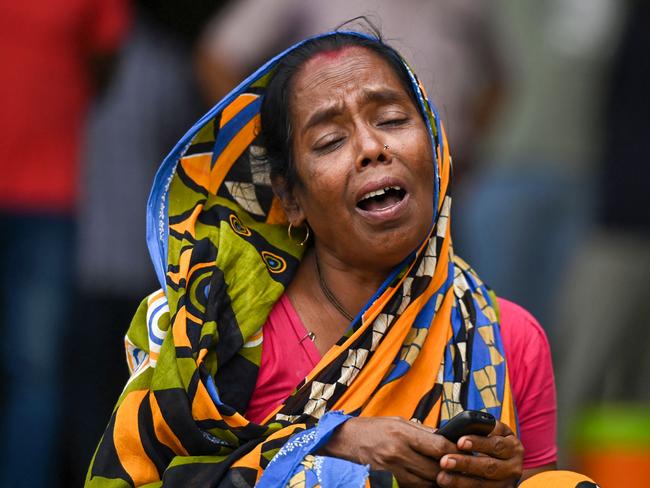
‘SOMEONE SHOULD BE PUNISHED’
Mr Vaishnaw said the “change that occurred during electronic interlocking, the accident happened due to that”, referring to a technical term for a complex signal system designed to stop trains colliding by arranging their movement on the tracks.
“Whoever did it, and how it happened, will be found out after proper investigation,” he said.
Local media have quoted a preliminary investigation report, with the Times of India reporting on Sunday that “human error in signalling may have caused the collision between three trains”.
Prime Minister Narendra Modi visited the crash site and injured passengers in hospital on Saturday and said “no one responsible” would be spared.
“I pray that we get out of this sad moment as soon as possible,” he told state broadcaster Doordarshan.
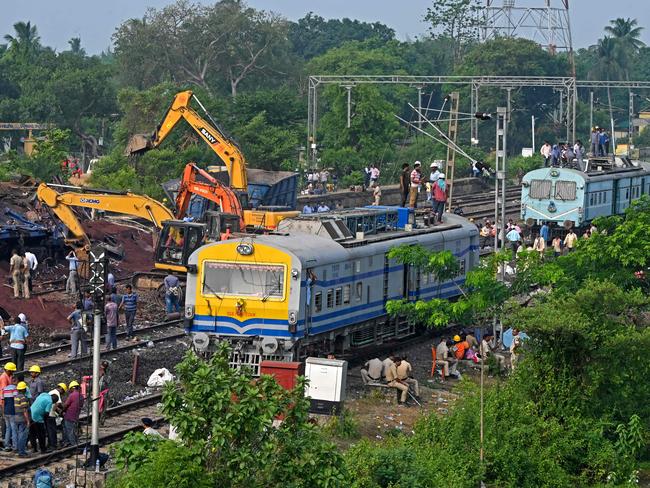
The rescue effort was declared over on Saturday evening after emergency personnel had combed the mangled wreckage for survivors and laid scores of bodies beside the tracks.
A high school close to the crash site was turned into a makeshift morgue, but officials said many of the bodies were so disfigured that several distraught families could only identify their loved ones by pieces of jewellery.
“There were bodies with only a torso, an entirely burnt face, disfigured skull and no other visible identity markers left,” said Ranajit Nayak, the police officer in charge of releasing the bodies at the school.
In sweltering heat, unidentified bodies were being transferred to bigger centres and officials suggested some would only be identified by DNA testing.
Mohammad Abid, 35, said his 18-year-old son had somehow survived the crash without injuries but he was looking for his cousin, who had been travelling with him.
“I want to know how two trains were allowed on the same track... someone should be punished for this,” Mr Abid said.
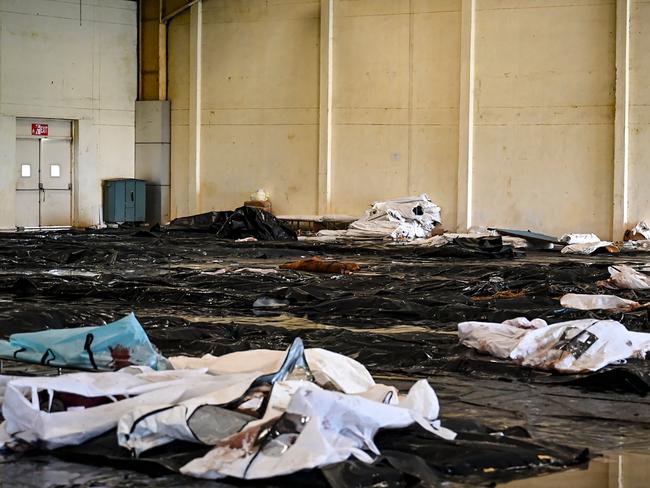
Grief-stricken Vishwanath Sahni, 47, was searching for his 26-year-old son Manoj Kumar, who had been travelling to Chennai for work in the textile industry.
He was waiting at a morgue after touring every hospital that he could. “I don’t know if I’ll find my son,” he said.
Authorities said every hospital between the crash site and the state capital Bhubaneswar, around 200 kilometres away, had received victims.
The disaster comes despite new investments and upgrades in technology that have significantly improved railway safety in recent years.
Condolences have poured in from around the world, including from Pope Francis, UN Secretary-General Antonio Guterres, US Secretary of State Antony Blinken and French President Emmanuel Macron.
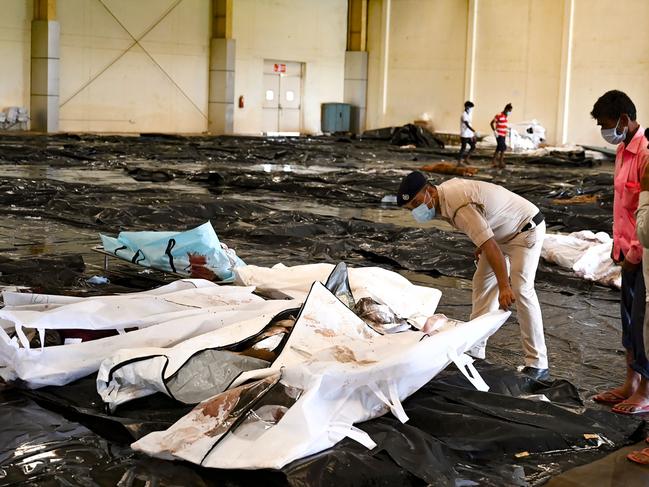
‘LOST COUNT OF THE BODIES’: SURVIVOR’S TRAIN CRASH HORROR
Debris was piled high at the crash site near Balasore, in the eastern state of Odisha, where some carriages had been tossed far from the tracks and others flipped over entirely.
Smashed train compartments were torn open in the impact late on Friday, leaving the wreckage stained with blood.
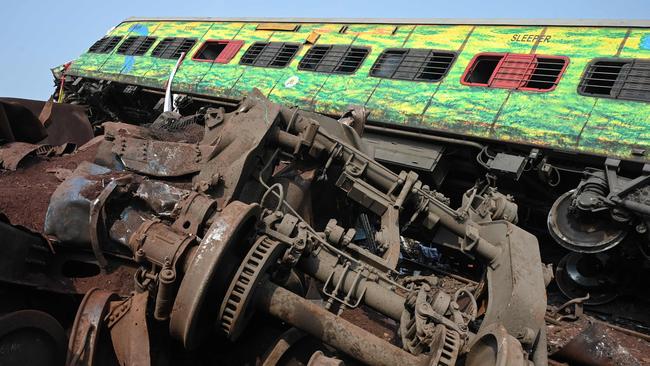
Researcher Anubhav Das was in the last carriage of one of the trains when he heard “screeching, horrifying sounds coming from a distance”.
His coach stayed upright and he jumped out unhurt after it ground to a halt.
“I saw bloodied scenes, mangled bodies and one man with a severed arm being desperately helped by his injured son,” the 27-year-old told AFP.
“I lost count of the bodies before leaving the site. Now I feel almost guilty.”
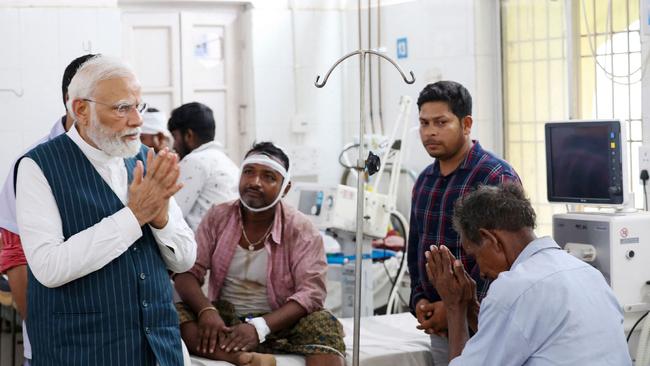
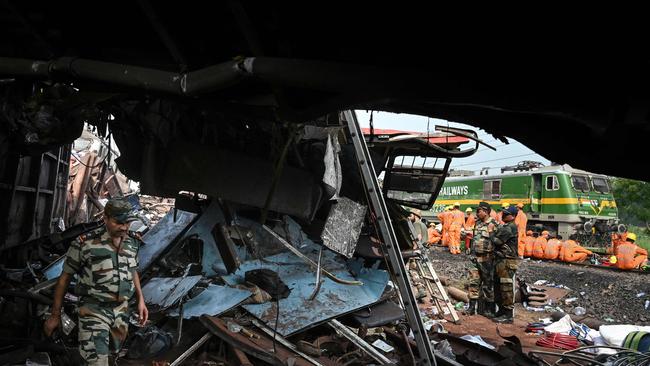
There was confusion about the exact sequence of events, but reports cited railway officials as saying that a signalling error sent the Coromandal Express running south from Kolkata to Chennai onto a side track.
It slammed into a stationary goods train and the wreckage derailed an express running north from India’s tech hub Bengaluru to Kolkata that was passing the site.
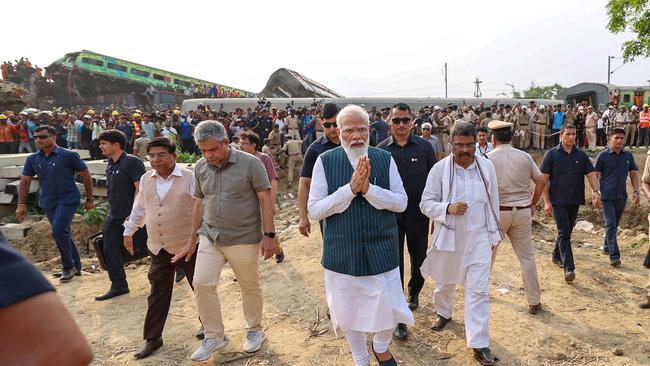
Residents nearby rushed to help the victims even before emergency services arrived.
“There were severed arms, legs, and even some partially severed heads -- while the unluckier ones died in pain, too much pain,” said Hiranmay Rath.
Over the next few hours the 20-year-old saw “more death and grief” than he could have “ever imagined”, he told AFP.
The rescue effort was declared over on Saturday evening after emergency personnel had combed the mangled wreckage for survivors and laid scores of bodies out under white sheets beside the tracks.
“All the dead bodies and injured passengers have been removed from the accident site,” said an official from the Balasore emergency control room.
Sudhanshu Sarangi, director general of Odisha Fire Services, said the death toll stood at 288 but was expected to go higher, potentially approaching 380.
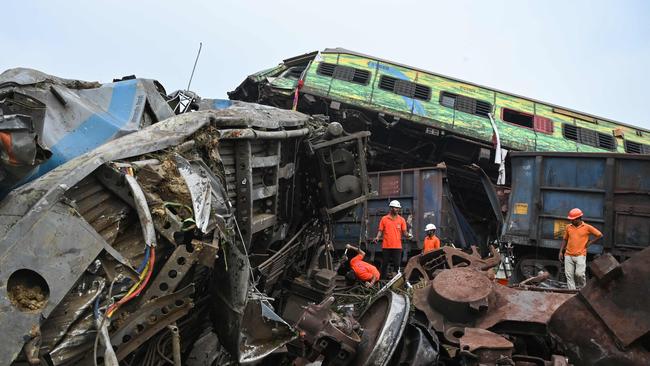
Indian Prime Minister Narendra Modi was expected to inaugurate a new high-speed train, the Vande Bharat Express, on Saturday as part of his government’s massive investment into modernising the country’s sprawling railway network and other infrastructure.
But instead, he travelled to the crash site in Balasore to share his condolences.
Mr Modi visited the crash site and injured passengers being treated in hospital and said “no one responsible” for the train crash would be spared.
“It’s a sad moment,” he told state broadcaster Doordarshan. “I pray that we get out of this sad moment as soon as possible.”
WORST RAIL CRASH IN TWO DECADES
India has one of the world’s largest rail networks and has seen several disasters over the years, the worst of them in 1981 when a train derailed while crossing a bridge in Bihar and plunged into the river below, killing between 800 and 1,000 people.
Friday’s crash ranks as its third-worst, and the deadliest since 1995, when two express trains collided in Firozabad, near Agra, killing more than 300 people.
Odisha state’s chief secretary Pradeep Jena confirmed that about 900 injured people had been hospitalised.
Images broadcast on local television stations showed long lines of bodies laid out with white sheets covering some, as rescue workers carried them away on stretchers.
Teams using metal cutting tools prised open gaps in the torn sides of carriages in a desperate search to reach those trapped inside, pulling out survivors and bodies.
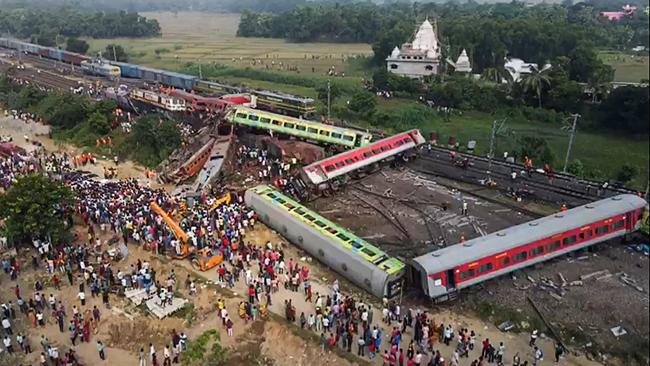
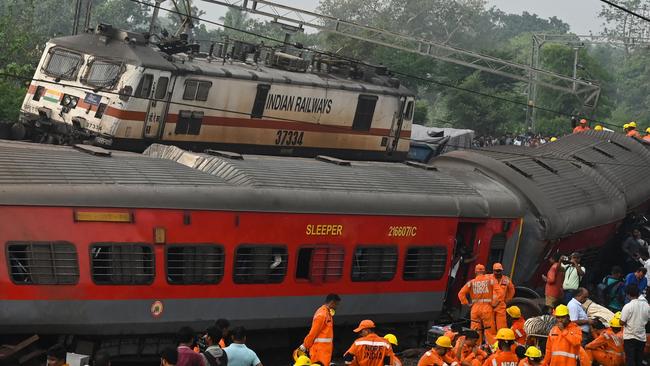
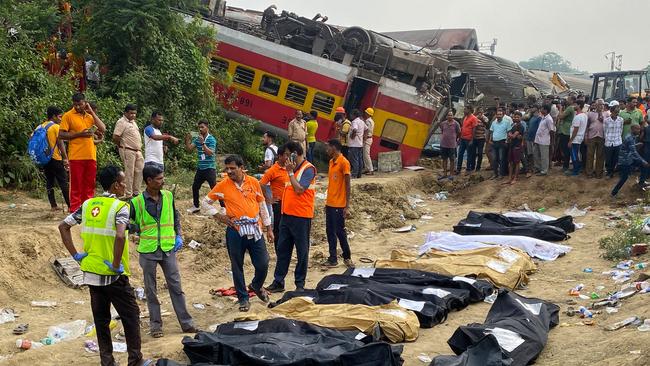
Rescue teams dressed in orange overalls and wearing face masks, including officers from India’s National Disaster Response Force, carried those they could extract to get aid.
With so many hurt, buses also carried the injured to medical centres. From a distance, residents stood watching the efforts.
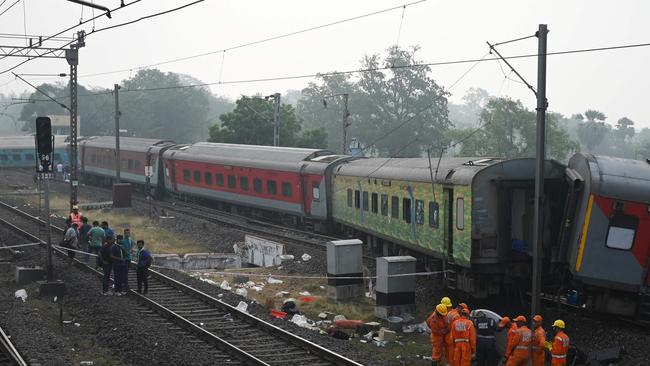
In nearby hospitals, volunteers lined up to give blood, with medics overwhelmed by the scale of the need.
Huge crowds gathered at the entrance of Bhadrak District Hospital, standing in shock as ambulance after ambulance arrived.
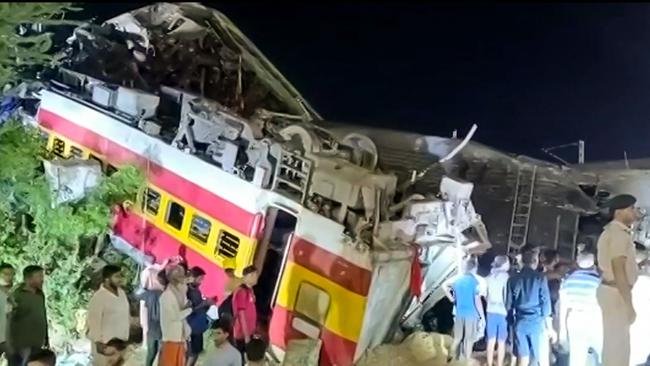
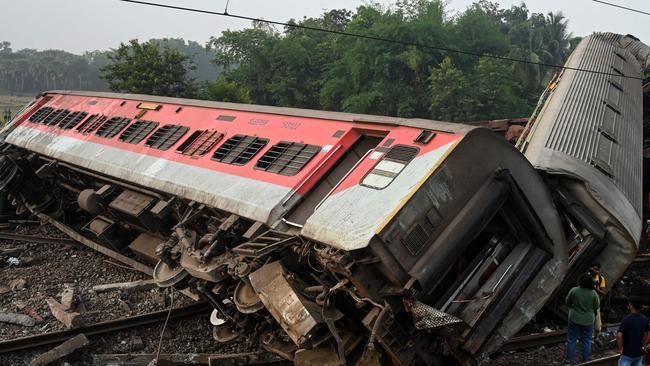
Amitabh Sharma, a railway ministry spokesperson, said pieces of the derailed train had fallen on to a nearby track where another passenger train travelling in the opposite direction hit them.
A second passenger train was also involved in the incident, according to Odisha’s chief secretary Pradeep Jena.
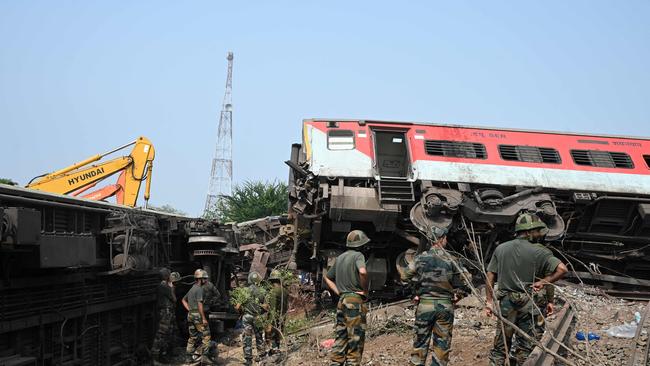
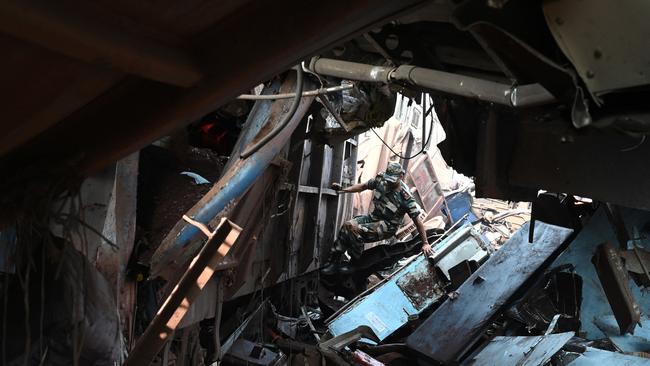
AFP reporters at the scene saw smashed train compartments torn open with bloodstained holes of twisted metal.
Carriages had flipped over entirely and rescue workers searched to pull out survivors trapped in the mangled wreckage, with scores of bodies laid out under white sheets beside the tracks.
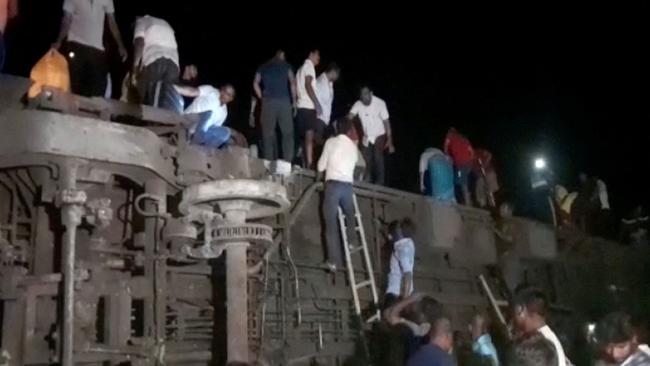
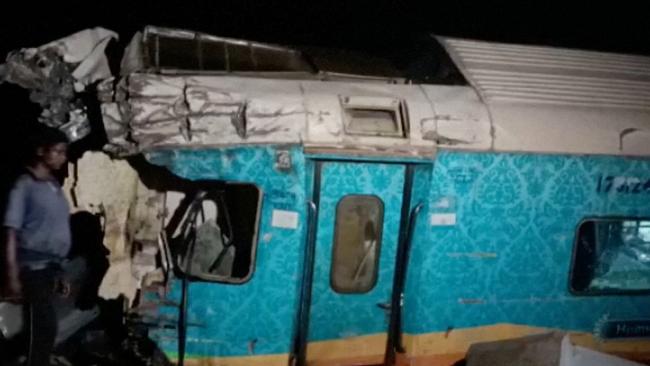
Sudhanshu Sarangi, director general of Odisha Fire Services, told AFP from the accident site:
“The rescue work is still going at the site and it will take us a few more hours to finish here.”
Odisha state’s chief secretary Pradeep Jena confirmed that about 850 injured people had been sent to hospitals, with rescue work ongoing.
“Our top priority now is rescuing (the passengers) and providing health support to the injured,” he said.
Rushing to the site in Odisha. My prayers for the speedy recovery of the injured and condolences to the bereaved families.
— Ashwini Vaishnaw (@AshwiniVaishnaw) June 2, 2023
Rescue teams mobilised from Bhubaneswar and Kolkata. NDRF, State govt. teams and Airforce also mobilised.
Will take all hands required for the rescue ops.
Mr Sharma, executive director with the Indian Railways, told AFP that two passenger trains “had an active involvement in the accident” while “the third train, a goods train, which was parked at the site, also got (involved) in the accident”.
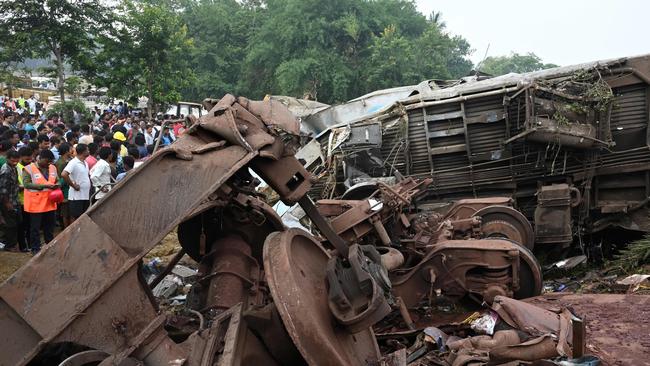
One survivor told local TV news reporters that he was sleeping when the accident happened, and woke to find himself trapped under around a dozen fellow passengers, before somehow crawling out of the carriage with only injuries to his neck and arm.
Another TV station showed graphic images of a train car toppled to one side of the track, as residents tried to pull victims to safety.
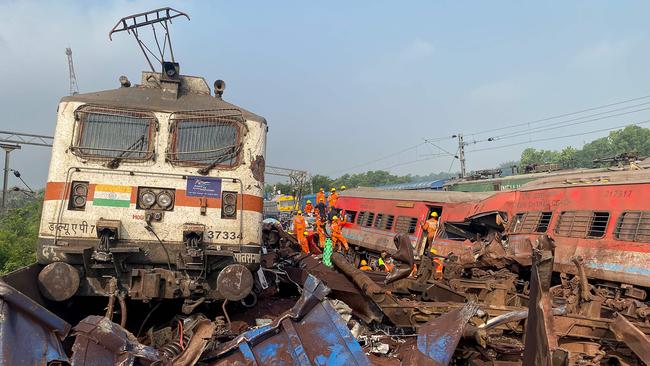
With so many injured, casualties were carried by both ambulances and buses to any hospital that had space.
“We have prepared all big government and private hospitals from the accident site to the state capital to cater to the injured”, said SK Panda, a spokesperson in Jena’s office in Odisha state.
The spokesperson added that authorities had already rushed “75 ambulances to the site and had also deployed many buses” to transport injured passengers.
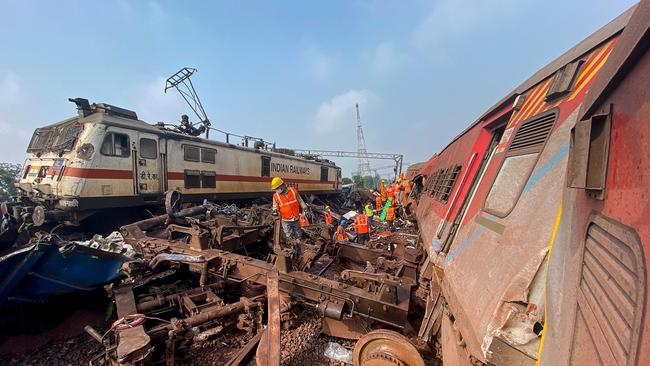
At Bhadrak District Hospital, ambulances brought in casualties, with the bloodied and shocked survivors receiving treatment in crowded wards.
Mr Modi said he was “distressed by the train accident”.
“In this hour of grief, my thoughts are with the bereaved families. May the injured recover soon”, Modi said on Twitter, adding that he had spoken to railways minister Ashwini Vaishnaw to take “stock of the situation”.
Vaishnaw said that he was rushing to the accident site, with rescue teams mobilised, including the National Disaster Response Force and air force.
“Will take all hands required for the rescue ops,” he said on Twitter.
Despite the latest crash, railway safety – thanks to massive new investments and upgrades in technology – has improved significantly in recent years.
– With AFP
Originally published as India train crash: Prime Minister Narendra Modi visits accident site




